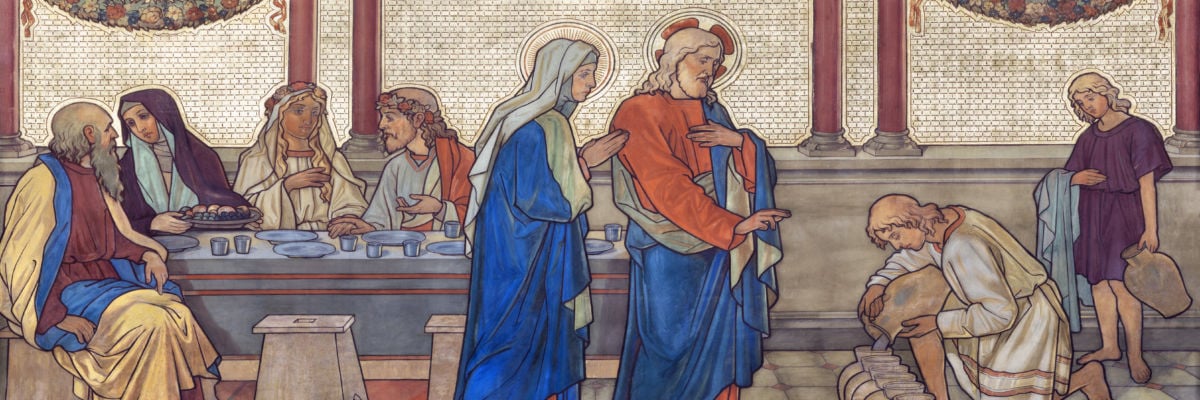
DAY 193
CHALLENGE
“Mary should not be given special honors. Jesus certainly didn’t show her any. In fact, he abruptly called her ‘woman.'”
DEFENSE
At the time, “woman” was a respectful form of address, like ”ma’am.”
Jesus refers to his mother as “woman” (Greek, gunai) in two passages— the wedding at Cana (John 2:4) and the Crucifixion (John 19:26–27). In the first, Mary informs him their hosts have run out of wine and (translating literally from the Greek), he says, “What (is that) to me and to you, woman?” Notice he puts Mary in the same category as himself—asking how their hosts’ concern affects the two of them.
This is not a sign of disrespect.
In the second, John says: “When Jesus saw his mother, and the disciple whom he loved standing near, he said to his mother, ‘Woman, behold, your son!’ Then he said to the disciple, ‘Behold, your mother!’ And from that hour the disciple took her to his own home.” Here again, there is no disrespect. Jesus tenderly provides for his mother’s care after his death.
Concerning the way the term “woman” is used as an address in the New Testament:
- Jesus uses it to address the Syro-Phoenician woman (Matt. 15:28).
- Jesus uses it to address the woman with a hemorrhage (Luke 13:12).
- Peter uses it to address the high priest’s servant girl (Luke 22:57).
- Jesus uses it to address the Samaritan woman at the well (John 4:21).
- Two angels use it to address Mary Magdalene (John 20:13).
- Jesus uses it to address Mary Magdalene (John 20:15).
- Paul uses it to address individual wives among his readers (1 Cor. 7:16).
- Paul uses it to address the wives in his audience (Col. 3:18, using the plural: gunaikes).
- Peter uses it to address the wives in his audience (1 Peter 3:1, using the plural: gunaikes).
None of these uses are disrespectful, and they reveal that “woman” was a polite form of address.
TIP
The same was true of the term “man” (Greek, anthropē or anēr) when used as a form of address. It functioned like the English terms “sir” or “mister.” Among other examples, see Luke 5:20, where Jesus tells the paralytic: “Man, your sins are forgiven you.”



